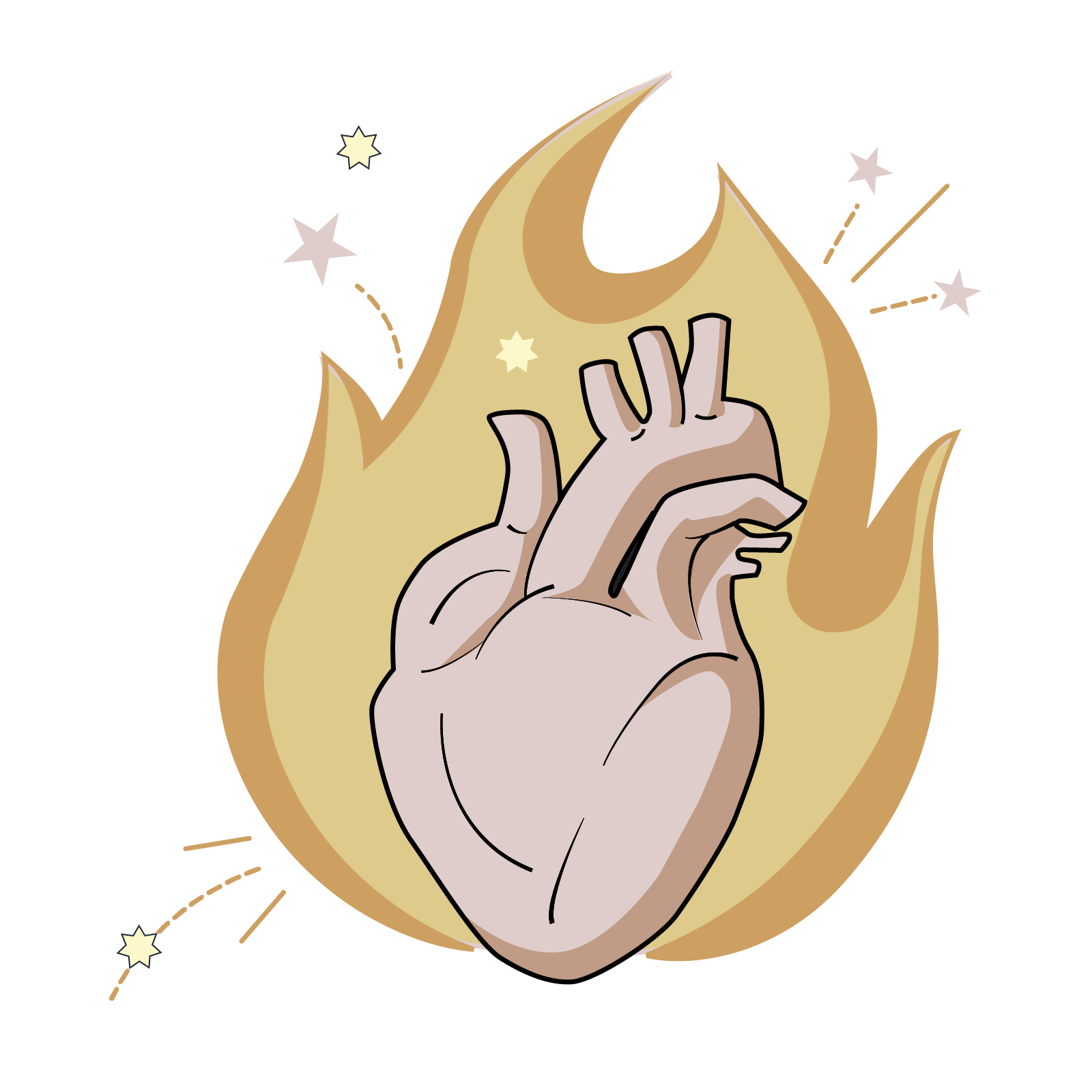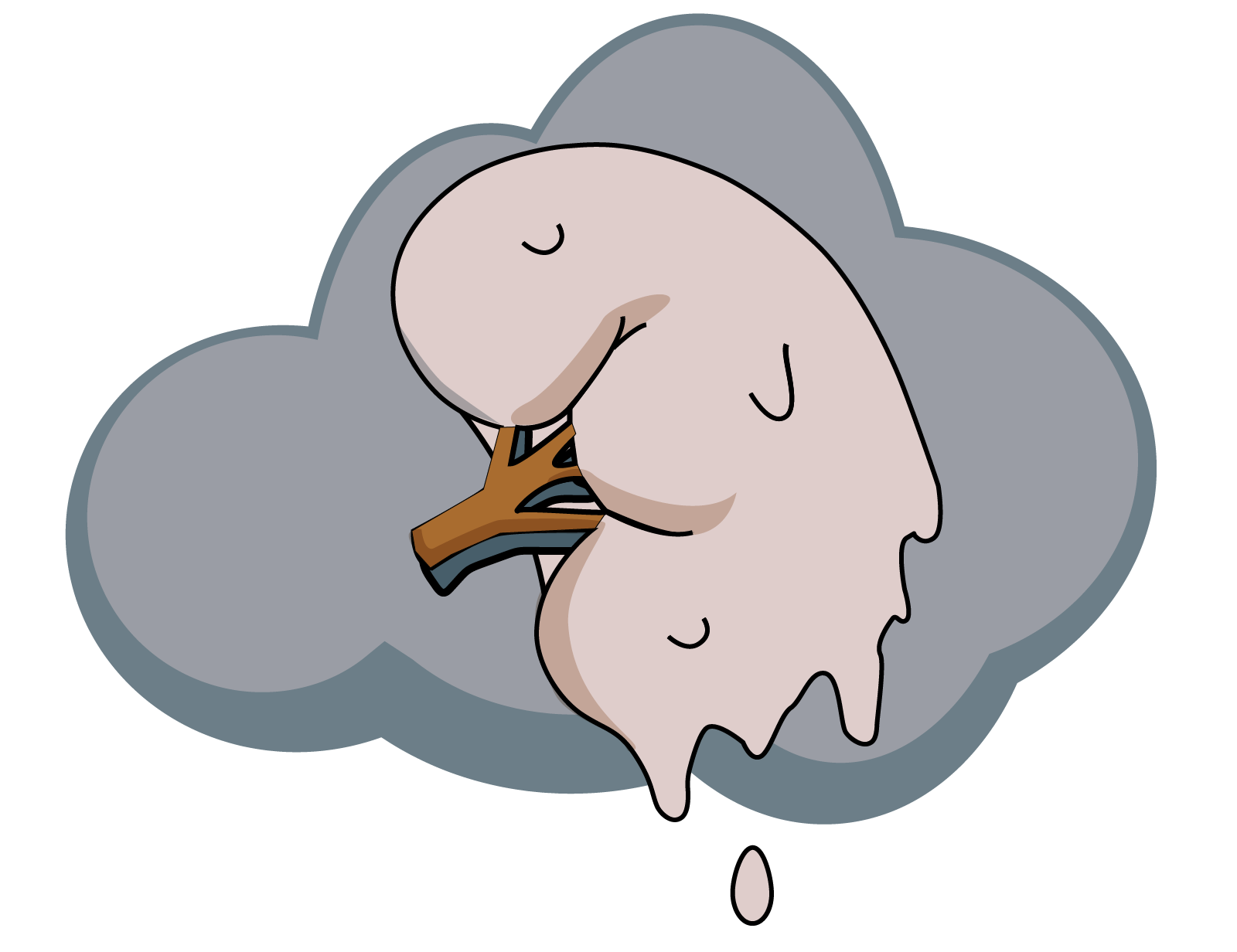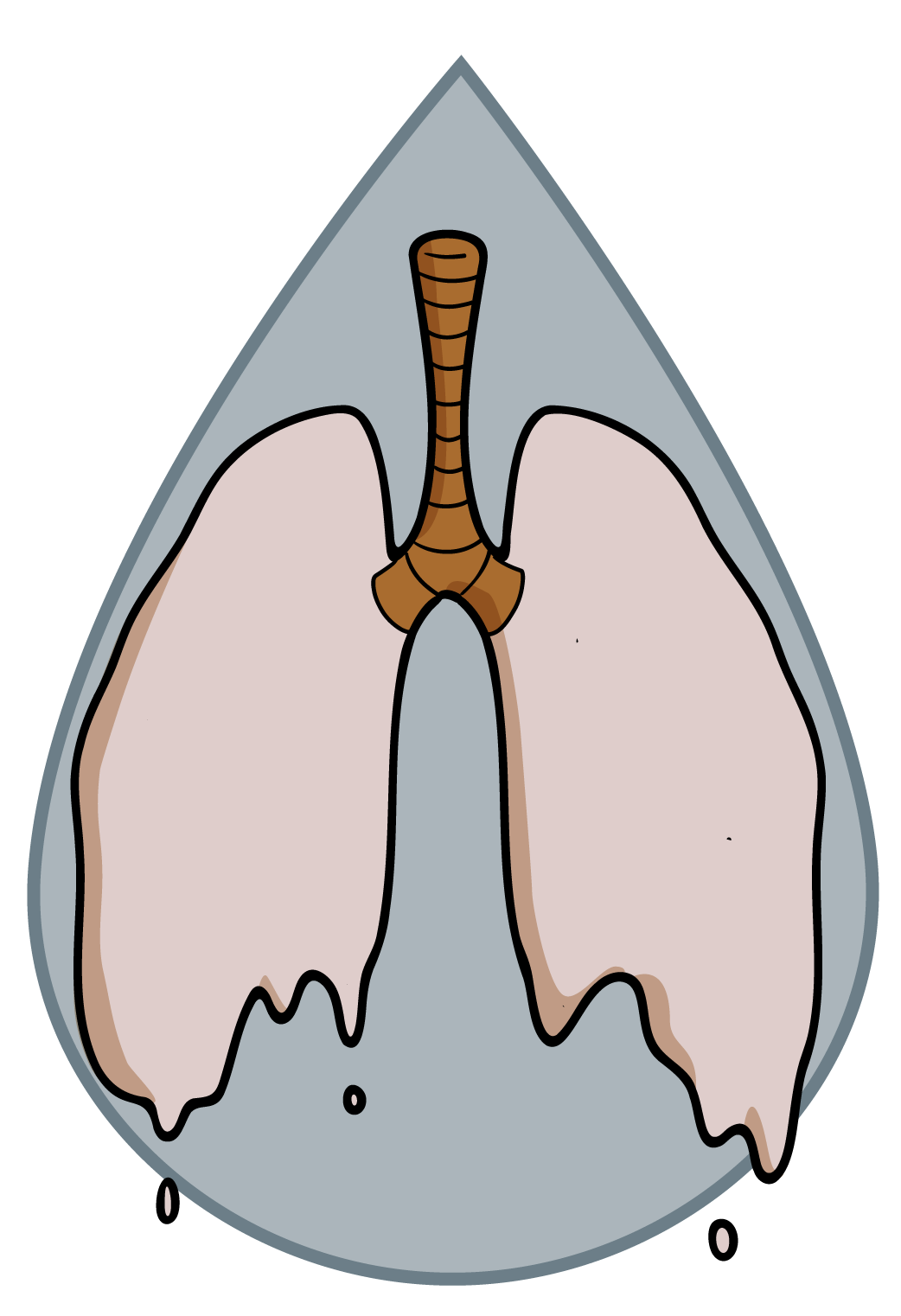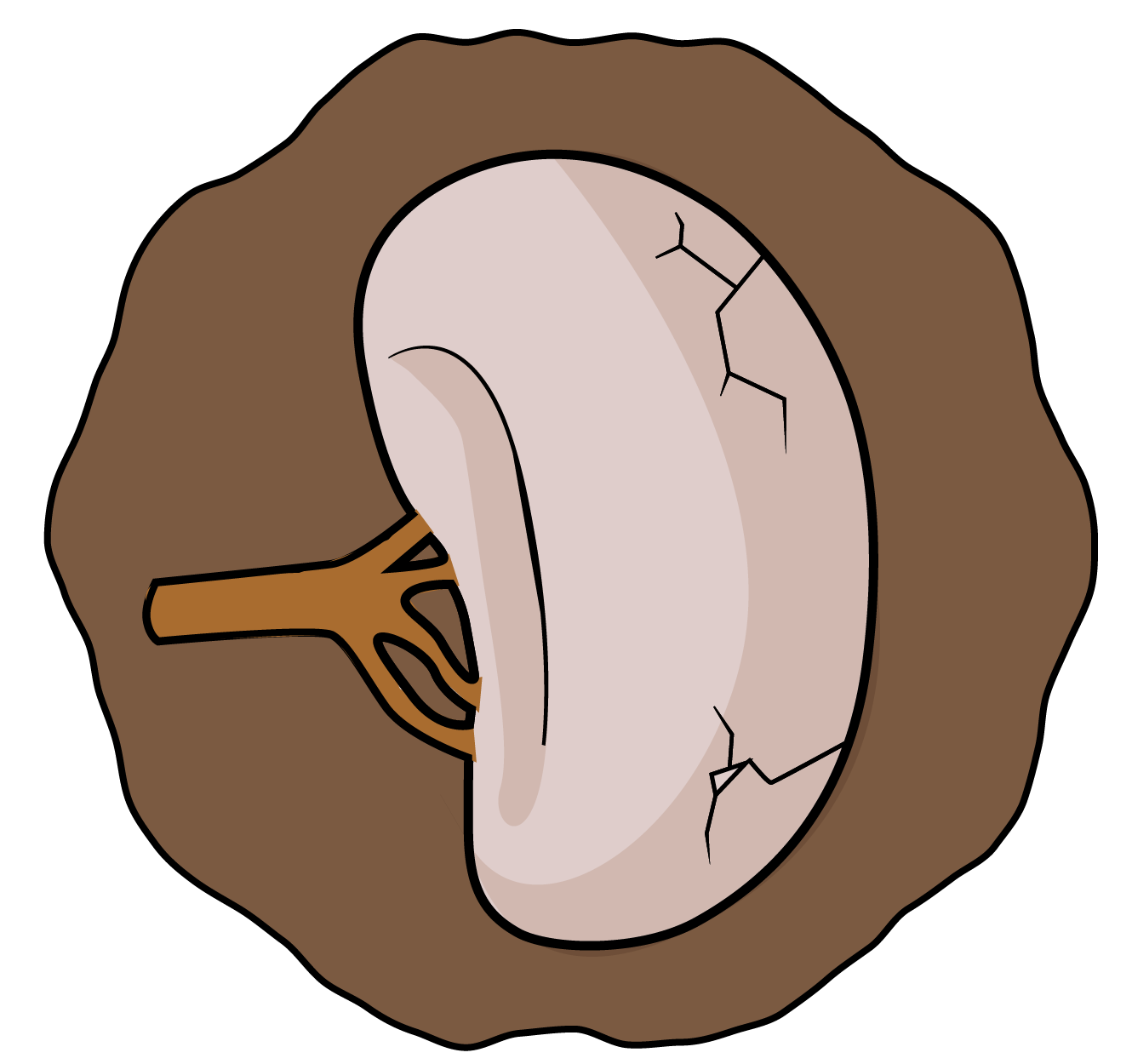Chapter 12. Emotion
Theories of Emotions
Jessica Motherwell McFarlane
Approximate reading time: 40 minutes
James-Lange Theory of Emotion
The James-Lange theory of emotion, proposed independently by psychologists William James and Carl Lange in the late 19th century, offers a surprising perspective on how we experience emotions. Instead of the common belief that we cry because we are sad, this theory suggests that we feel sad because we cry. In essence, these theorists claim that physiological reactions in our body, such as a racing heart or sweaty palms, come before and cause the emotional experiences like fear, joy, or anger. (Ratcliffe, 2005).
Recent scientific findings have supported this theory. Laird and Lacasse (2014) provided evidence suggesting that bodily feedback, combined with our perceptions of situational cues (clues from the environment or context that help us understand what’s happening around us), significantly shape our emotional feelings. This aligns with the James-Lange theory’s emphasis on the intertwined nature of physiological changes and emotional experiences.
However, the James-Lange theory has its critics. Hutto, Robertson, and Kirchhoff’s (2018) critique proposes a more complex framework. They acknowledge the value of the James-Lange theory but suggest that emotions are not just biological but also deeply embedded in our interactions with the environment (Hutto et al., 2018). This means that what we typically think of as internal experiences, like emotions, can’t be fully understood just by looking at what’s happening inside our bodies; we also need to consider how we’re engaged with our environment. It’s like saying that to understand why you’re dancing, you can’t just look at the movement of your muscles; you have to hear the music and see the dance floor too.
Another example of this environmental issue is when you’re feeling nervous before giving a speech. According to the James-Lange theory, you might feel nervous because your heart is racing and your palms are sweaty. But Hutto and colleagues would argue that your nervousness is also influenced by seeing the audience, the pressure of the situation, and remembering past experiences of public speaking. So, to fully understand your nervousness, you need to consider both your body’s reactions and your interactions with the environment around you. We will come back to this concept that the environment may shape our emotional experience when we discuss emotional geographies later in the chapter.
Cannon-Bard Theory of Emotions
The Cannon-Bard Theory of emotion, developed by Walter Cannon and later expanded upon by Philip Bard, suggests that emotional and physiological reactions to stimuli occur simultaneously. Unlike the James-Lange theory, which suggests that physiological reactions come before emotional experiences, the Cannon-Bard theory asserts that the thalamus in the brain sends signals simultaneously to the cortex (leading to conscious emotion) and to the autonomic nervous system (leading to physiological arousal). When an individual encounters an emotion-inducing stimulus, for example, a scary barking dog, two parallel processes occur simultaneously: the emotional experience (e.g., feeling afraid) and the physiological response (e.g., increased heart rate). These processes are independent, meaning that one does not cause the other. In essence, when you see a threatening stimulus, you simultaneously feel fear at the same time as your body prepares for a fight-or-flight response. This perspective contrasts with the James-Lange theory, which suggests that physiological reactions lead to emotional experiences. Recent research, such as that by Bagur et al. (2021) has shown results consistent with the Cannon-Bard theory.
Despite having some empirical support, the Cannon-Bard theory is not without its criticisms. Critics point to the complexity and variability of emotional experiences, which the theory might not fully address. Loaiza (2020) suggests that the theory might oversimplify the nature of emotions and fail to consider cultural influences (e.g., in some cultures, the dog might be seen as a protector, reducing fear), individual differences (e.g., a person who has had negative experiences with dogs in the past might feel more intense fear), and context-specific effects (e.g., they might feel less fear if the dog is on a leash beside its owner).
Schachter-Singer Two-Factor Theory of Emotion
The Schachter-Singer two-factor theory of emotion is another variation on theories of emotions that takes into account both physiological arousal and the emotional experience. According to this theory, emotions are composed of two factors: physiological and cognitive. In other words, physiological arousal is interpreted in context to produce the emotional experience. In revisiting our example involving the barking dog, the two-factor theory maintains that the dog elicits sympathetic nervous system activation that is labeled as fear given the context, and our experience is that of fear. If you had labeled your sympathetic nervous system activation as joy, you would have experienced joy. The Schachter-Singer two-factor theory depends on labeling the physiological experience, which is a type of cognitive appraisal.
Magda Arnold was the first theorist to offer an exploration of the meaning of appraisal, and to present an outline of what the appraisal process might be and how it relates to emotion (Roseman & Smith, 2001). The key idea of appraisal theory is that you have thoughts (a cognitive appraisal) before you experience an emotion, and the emotion you experience depends on the thoughts you had (Frijda, 1988; Lazarus, 1991). If you think something is positive, you will have more positive emotions about it than if your appraisal was negative, and the opposite is true. Appraisal theory explains the way two people can have two completely different emotions regarding the same event. For example, suppose your psychology instructor selected you to lecture on emotion; you might see that as positive, because it represents an opportunity to be the centre of attention, and you would experience happiness. However, if you dislike speaking in public, you could have a negative appraisal and experience discomfort.
Schachter and Singer believed that physiological arousal is very similar across the different types of emotions that we experience, and therefore, the cognitive appraisal of the situation is critical to the actual emotion experienced. In fact, it might be possible to misattribute arousal to an emotional experience if the circumstances were right (Schachter & Singer, 1962). They performed a clever experiment to test their idea. Participants were randomly assigned to one of several groups. Some of the participants received injections of epinephrine that caused bodily changes that mimicked the fight-or-flight response of the sympathetic nervous system; however, only some of these participants were told to expect these reactions as side effects of the injection. The other participants that received injections of epinephrine were told either that the injection would have no side effects or that it would result in a side effect unrelated to a sympathetic response, such as itching feet or headache. After receiving these injections, participants waited in a room with someone else they thought was another subject in the research project. In reality, the other person was a confederate of the researcher. The confederate engaged in scripted displays of euphoric or angry behaviour (Schachter & Singer, 1962).
When those participants who were told that they should expect to feel symptoms of physiological arousal were asked about any emotional changes that they had experienced related to either euphoria or anger (depending on the way the confederate behaved), they reported none. However, the participants who weren’t expecting physiological arousal as a function of the injection were more likely to report that they experienced euphoria or anger as a function of their assigned confederate’s behaviour. While everyone who received an injection of epinephrine experienced the same physiological arousal, only those who were not expecting the arousal used context to interpret the arousal as a change in emotional state (Schachter & Singer, 1962).
Strong emotional responses are associated with strong physiological arousal, which caused some theorists to suggest that the signs of physiological arousal, including increased heart rate, respiration rate, and sweating, might be used to determine whether someone is telling the truth or not (Klein Selle, Agari, & Ben-Shakhar, 2019; Lazarus, Speisman, & Mordkoff, 1963; Sosnowski, Nurzynska, & Połeć, 1991). The assumption is that most of us would show signs of physiological arousal if we were being dishonest with someone. A polygraph, or lie detector test, measures the physiological arousal of an individual responding to a series of questions. Someone trained in reading these tests would look for answers to questions that are associated with increased levels of arousal as potential signs that the respondent may have been dishonest on those answers. While polygraphs are still commonly used, their validity and accuracy are highly questionable because there is no evidence that lying is associated with any particular pattern of physiological arousal (Saxe & Ben-Shakhar, 1999).
Student studying hint: What is the key difference between Cannon-Bard and Schachter-Singer?Cannon-Bard theory says that when something exciting or scary happens, two things happen at the same time: you feel the emotion (like happiness or fear) and your body reacts (like your heart beating faster). So, if you see a scary dog, you feel scared and your heart races at the same time.
Schachter-Singer theory is a bit more complex. It says that when something happens, your body reacts first (like your heart racing), but you don’t feel the emotion right away. You look around and try to understand why your body is reacting that way. Once you figure it out (like realising the scary dog is why your heart is racing), that’s when you feel the emotion (fear). So, it’s not just the scary dog that makes you feel afraid, but also your understanding of the situation.
The Cognitive-Mediational Model
“Model” refers to the specific framework or representation of the process by which cognitive appraisal (how we mentally assess and interpret situations) mediates (influences or changes) emotional responses (our feelings and reactions).
“Theory” refers to the overarching scientific explanation that includes this model among its components. It is a broader concept that explains how and why things happen.
Therefore, Lazarus developed the “cognitive-mediational theory” (a comprehensive explanation of how emotions are processed), which includes the “Cognitive-Mediational Model” (a detailed framework showing the steps involved) as a part of its explanation on how emotions are processed.
The relationship between our experiencing of emotions and our cognitive processing of them, and the order in which these occur, remains a topic of research and debate. Lazarus (1991) developed the cognitive-mediational theory, which asserts that our emotions are determined by our appraisal of the stimulus. This appraisal mediates works in between the stimulus and the emotional response, and it is immediate and often unconscious. In contrast to the Schachter-Singer model, the appraisal comes before a cognitive label. You will learn more about Lazarus’s appraisal concept when you study stress, health, and lifestyle. However, there are other views of emotions that also emphasise the cognitive processes.
Mauss and her colleagues studied automatic emotion regulation (AER), which refers to the non-deliberate control of emotions. It is simply not reacting with your emotions, and AER can affect all aspects of emotional processes. AER can influence the things you attend to, your appraisal, your choice to engage in an emotional experience, and your behaviours after an emotion is experienced (Mauss, Bunge, & Gross, 2007; Mauss, Levenson, McCarter, Wilhelm, & Gross, 2005). AER is similar to other automatic cognitive processes in which sensations activate knowledge structures that affect functioning. These knowledge structures can include concepts, schemas, or scripts.
The idea of AER is that people develop an automatic process that works like a script or schema, and the process does not require deliberate thought to regulate emotions. AER works like riding a bicycle.Once you develop the process, you just do it without thinking about it. AER can be adaptive (helpful and beneficial for dealing with situations) or maladaptive (harmful and counterproductive, making situations worse) and has important health implications (Hopp, Troy, & Mauss, 2011). Adaptive AER leads to better health outcomes than maladaptive AER, primarily due to experiencing or mitigating stressors better than people with maladaptive AERs (Hopp, Troy, & Mauss, 2011). Alternatively, maladaptive AERs may be critical for maintaining some psychological disorders (Hopp, Troy, & Mauss, 2011). Mauss and her colleagues found that strategies could reduce negative emotions, which in turn should increase psychological health (Mauss, Cook, Cheng, & Gross, 2007; Mauss, Cook, & Gross, 2007; Shallcross, Troy, Boland, & Mauss, 2010; Troy, Shallcross, & Mauss, 2013; Troy, Wilhelm, Shallcross, & Mauss, 2010). Mauss has also suggested there are problems with the way emotions are measured, but she believes most of the aspects of emotions that are typically measured are useful (Mauss, et al., 2005; Mauss & Robinson, 2009). However, another way of considering emotions challenges our entire understanding of emotions.
After about three decades of interdisciplinary research, Barrett (watch her TED talk below) argued that we do not understand emotions. She proposed that emotions were not built into your brain at birth, but rather they were constructed based on your experiences. Emotions in the constructivist theory are predictions that construct your experience of the world. In a prior chapter, you learned that concepts are categories or groupings of linguistic information, images, ideas, or memories, such as life experiences. Barrett extended that to include emotions as concepts that are predictions (Barrett, 2017). Two identical physiological states can result in different emotional states depending on your predictions. For example, your brain predicting a grumbling stomach in a bakery could lead your brain to construct hunger. However, your brain predicting a grumbling stomach while you were waiting for medical test results could lead your brain to construct worry. Thus, you can construct two different emotions from the same physiological sensations. Rather than emotions being something over which you have no control, you can control and influence your emotions.
Student studying hint: What is the key difference between Schachter-Singer and cognitive mediational theories?
Imagine emotions like a movie that happens inside you when you experience something. Both Schachter-Singer and cognitive mediational theories are like different explanations about how this movie gets made and played inside you.
The Schachter-Singer theory, also known as the two-factor theory, says that when something happens, your body reacts first (like your heart beating faster if you’re scared), and then your brain quickly looks around to figure out why your body is reacting this way. After that quick look around, your brain decides what emotion you’re feeling based on what’s happening outside and how your body reacted.
On the other hand, the cognitive mediational theory says your brain is the director of the movie. It says that when something happens, your brain first thinks about it, decides if it’s good, bad, or not important, and then tells your body how to react. Your emotion comes from your brain’s decision about the situation.
So, the big difference is about who’s in charge of starting the movie of emotion inside you. Schachter-Singer theory says it’s your body reacting first, then your brain making sense of it. Cognitive mediational theory says your brain is the boss, deciding first, and then telling your body how to react. In other words, the Cognitive mediational theory says that you aren’t at the mercy of your emotions — your brain creates them.
Watch this video: Tricky Topics: Theories of Emotion (4.5 minutes)
“Tricky Topics: Theories of Emotion” video by FirstYearPsych Dalhousie is licensed under the Standard YouTube licence.
Raw “Gut Feeling”: Emotions as Perceptual Experiences
Emotions can also be understood as “raw gut feelings.” This perspective suggests that emotions can be experienced in a manner similar to how we perceive sensory stimuli, like sights or sounds. Just as we can see or hear something without necessarily understanding or naming it, we can feel emotions in a similar raw, uninterpreted manner (de Sousa, 1987; Tappolet, 2000; Tappolet, 2016; Döring, 2003; Zajonc, 1998). Recent research has echoed these theories of emotion, emphasising the integration (the process of combining or bringing together) of sensory and motor signals in emotion (Caruana Fausto, 2019). Zajonc’s idea of an instantaneous and unexplainable “gut feeling” or like/dislike for someone or something (Zajonc, 1980) aligns with the understanding that emotions emerge from bodily dispositions conditioned by a specific social context (Scheer, 2012).
LeDoux also views some emotions as requiring no cognition; some emotions completely bypass contextual interpretation. His research into the neuroscience of emotion has demonstrated the amygdala’s primary role in fear (Cunha, Monfils, & LeDoux, 2010; LeDoux 1996, 2002). A fear stimulus is processed by the brain through one of two paths: from the thalamus (where it is perceived) directly to the amygdala, or from the thalamus through the cortex and then to the amygdala. The first path is quick, while the second enables more processing about details of the stimulus. In the following section, we will look more closely at the neuroscience of emotional response.
Emotions Explained by Traditional Chinese Medicine
In this section, we will learn about a perspective not typically seen in Introduction to Psychology textbooks. We will explore emotions as explained by Traditional Chinese Medicine (TCM) — a culturally dominant (widely accepted and practiced) healthcare system for the 1.4 billion people in China (World Bank, 2024) and likely many more patients around the world. When we understand emotions through the lens of TCM, we will gain two perspectives not included in the previous scientific theories discussed so far. First, we can understand how emotions may be situated in specific locations in our body and go far beyond generalised “gut feelings.” Second, TCM deeply integrates the connection between emotions and Nature, specifically, the elements of fire, wood, earth, metal and water. In discussing the physical location of emotions and the broader connection to Nature and basic elements, TCM has parallels to emotional geographies discussed in the next section and holistic Indigenous theories of well-being.
Traditional Chinese Medicine is a holistic system of health care with its roots in ancient China that dates back more than 2000 years (Unschuld, 1985). In TCM, emotions are considered a fundamental aspect of health and well-being, closely interlinked with the physical state of the body. Each emotion is believed to be associated with a specific organ system, and imbalances in these emotions can lead to physical and psychological disturbances (Maciocia, 2009).
In TCM, qi — the vital life force flowing through the body — is deeply interconnected with emotions, each influencing and reflecting the state of the other. Emotions are not just mental experiences but also physiological ones that resonate with specific organ systems, potentially affecting the flow of qi. For instance, persistent stress or anger can disrupt the smooth flow of liver qi, leading to physical symptoms and further emotional imbalance. Conversely, a blockage or imbalance in qi can manifest as emotional disturbances, illustrating a bidirectional relationship. TCM practices like acupuncture (a technique of inserting thin needles into specific points on the body) and Qigong (a system of coordinated body-posture and movement, breathing, and meditation used for health, spirituality, and martial arts training) aim to harmonize qi flow (the circulation of life energy), thereby promoting both physical health and emotional balance. This intrinsic link highlights the TCM perspective that emotional well-being is a critical component of overall health, as emotions are both a reflection and determinant of the body’s energetic harmony.
According to TCM, there are five primary emotions that correspond to the five elements and their associated organs:
- Joy (Fire — Heart): Joy is the emotion of the heart and the fire element. The emotions of love, happiness, and joy are felt here. In moderation, joy is beneficial and can nourish the heart. However, excessive joy or excitement is believed to scatter the heart’s qi (vital energy; for example, a manic episode, which is an extremely high and overly excited state that can affect a person’s thoughts and behaviours), leading to restlessness and insomnia (O’Connor & Bensky, 1981). The heart directly influences mental and emotional states. Anxiety related to the heart often manifests as restlessness, palpitations, and insomnia.

Figure EM.5. Joy (Fire-Heart). Joy is the emotion of the heart and the fire element. - Anger (Wood — Liver): Anger, frustration, and resentment are associated with the liver and the wood element. TCM suggests that anger can cause qi to rise, potentially leading to headaches, dizziness, and other health issues (Maciocia, 2009). The emotions of peace, kindness, and harmony are the positive aspects associated with the liver.

Figure EM.6. Anger (Wood-Liver). Anger, frustration, and resentment are associated with the liver and the wood element.
- Worry and Overthinking (Earth — Spleen): Worry and overthinking are tied to the spleen and the earth element. These emotions can lead to an imbalance in the spleen’s ability to transform and transport nutrients, potentially causing digestive issues (Ni, 1995). Trust and openness are the positive aspects associated with the spleen.

Figure EM.7. Worry and Overthinking (Earth-Spleen). Worry and overthinking are tied to the spleen and the earth element. - Sadness and Grief (Metal — Lung): Sadness and grief are associated with the lungs and the metal element. Excessive grief can deplete the lung’s qi, affecting respiratory functions and possibly leading to fatigue and susceptibility to colds (Flaws, 2007). Courage and righteousness are the positive aspects associated with the lungs.

Figure EM.8. Sadness and Grief (Metal-Lung). Sadness and grief are associated with the lungs and the metal element. - Fear (Water — Kidney): Fear is linked to the kidneys and the water element. Chronic fear can weaken the kidneys, potentially leading to lower back pain, tinnitus, and in severe cases, incontinence (Ni, 1995). Wisdom and gentleness are the positive aspects associated with the kidneys.

Figure EM.9. Fear (Water-Kidney). Fear is linked to the kidneys and the water element.
TCM’s perspective on emotions is largely theoretical and based on traditional medical practices and theory that have existed for millenia. While some modern studies have investigated the efficacy of TCM practices like acupuncture and herbal medicine, the specific theories about emotions and organ systems have not been extensively validated through scientific research as understood in academic/scientific medicine. This is partly due to the difficulty of quantifying and testing the concepts of qi and organ-emotion correspondences within a scientific framework.
Some research has explored the physiological effects of emotions and their potential impact on health, which indirectly supports certain aspects of TCM theory. For example, stress (which could be linked to TCM concepts of worry or anger) has been shown to have various detrimental effects on health, including impairing digestive and immune functions (Segerstrom & Miller, 2004).
Although TCM’s understanding of the interplay between emotions, organ systems, and qi flow remains largely unvalidated by academic, scientific standards, TCM’s comprehensive framework continues to inform alternative health practices and offers a complementary approach to emotional and physical health. As the dialogue between traditional and Modern medical systems evolves, TCM’s insights into emotional well-being may offer valuable perspectives, encouraging a more integrated approach to health that honours the complex interconnections between mind, body, and environment.
Watch this video: The 5 Organs and 5 Emotions: What Your Body is Saying (6.5 minutes)
“The 5 Organs and 5 Emotions: What Your Body is Saying” video by Dr. Alex Heyne – Acupuncture and Chinese Medicine is licensed under the Standard YouTube licence.
Summary: Theories of Emotions
This section explores various theories of emotions, offering a comprehensive look at how emotions are conceptualised and understood within psychological science. It begins with the James-Lange Theory of Emotion, which posits that physiological reactions precede emotional experiences, suggesting that our feelings are a result of our body’s responses to stimuli. The Cannon-Bard Theory challenges this by arguing that emotions and physiological responses occur simultaneously, not sequentially. The Schachter-Singer two-factor theory adds another layer, proposing that emotions arise from physiological arousal and cognitive interpretation of that arousal. The Cognitive-Mediational Model further refines this idea by emphasising the role of cognitive appraisal in the experience of emotion, suggesting that our thoughts about an event affect how we feel about it.
Additionally, the section touches on the concept of “Raw Gut Feeling,” which describes emotions as perceptual experiences directly tied to our bodily sensations. Traditional Chinese Medicine (TCM) offers a unique perspective, linking emotions to the balance and health of the body’s organs, as explored in the “Emotions explained by Traditional Chinese Medicine” segment. This holistic approach underscores the interconnectedness of physical health and emotional well-being, as further illustrated in the accompanying video on the 5 Organs and 5 Emotions.
Image Attributions
Figure EM.5. Joy (Fire-Heart) by Rachel Lu is licensed under a CC BY-NC-SA license.
Figure EM.6. Anger (Wood-Liver) by Rachel Lu is licensed under a CC BY-NC-SA license.
Figure EM.7. Worry and Overthinking (Earth-Spleen) by Rachel Lu is licensed under a CC BY-NC-SA license.
Figure EM.8. Sadness and Grief (Metal-Lung) by Rachel Lu is licensed under a CC BY-NC-SA license.
Figure EM.9. Fear (Water-Kidney) by Rachel Lu is licensed under a CC BY-NC-SA license.
To calculate this time, we used a reading speed of 150 words per minute and then added extra time to account for images and videos. This is just to give you a rough idea of the length of the chapter section. How long it will take you to engage with this chapter will vary greatly depending on all sorts of things (the complexity of the content, your ability to focus, etc).

